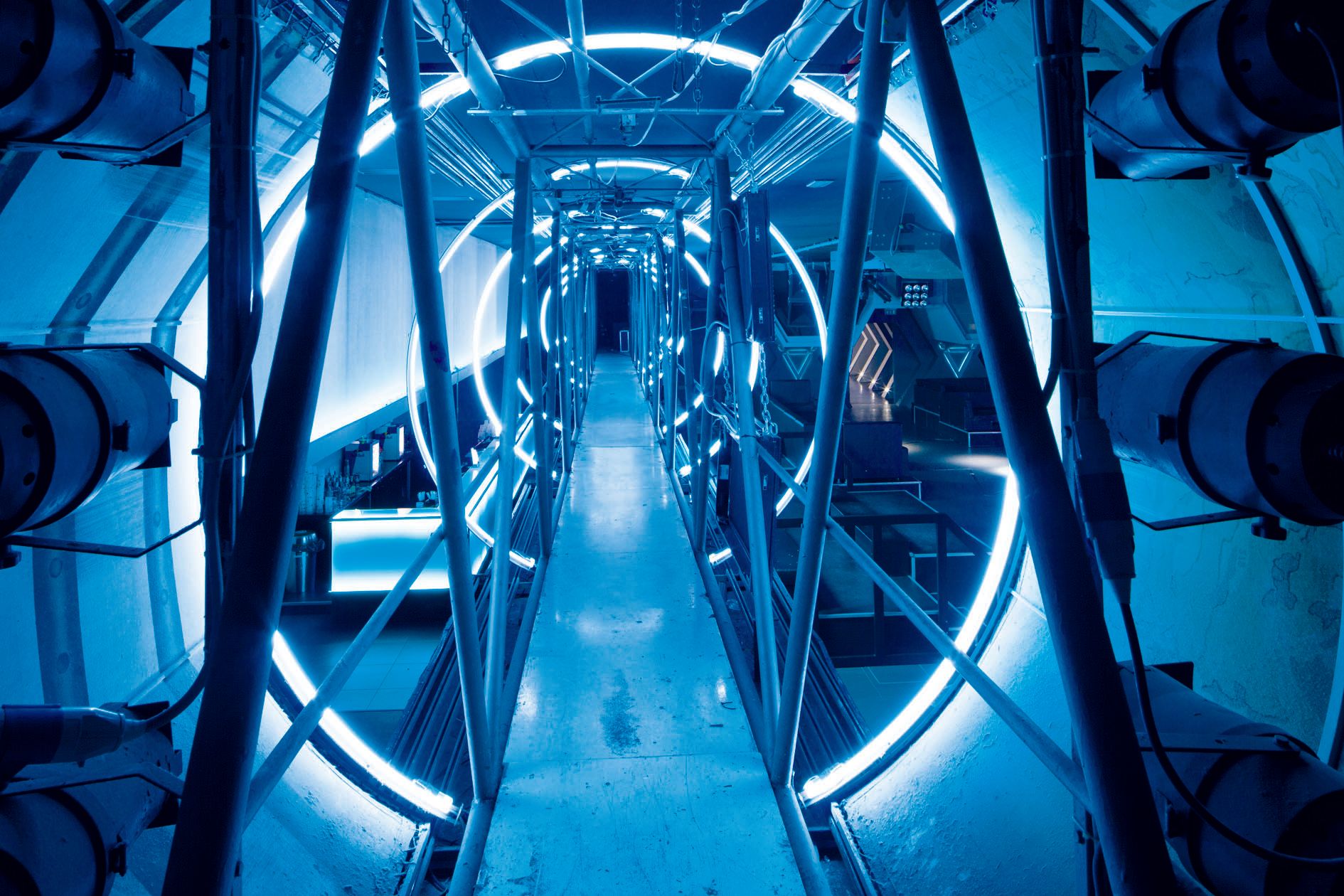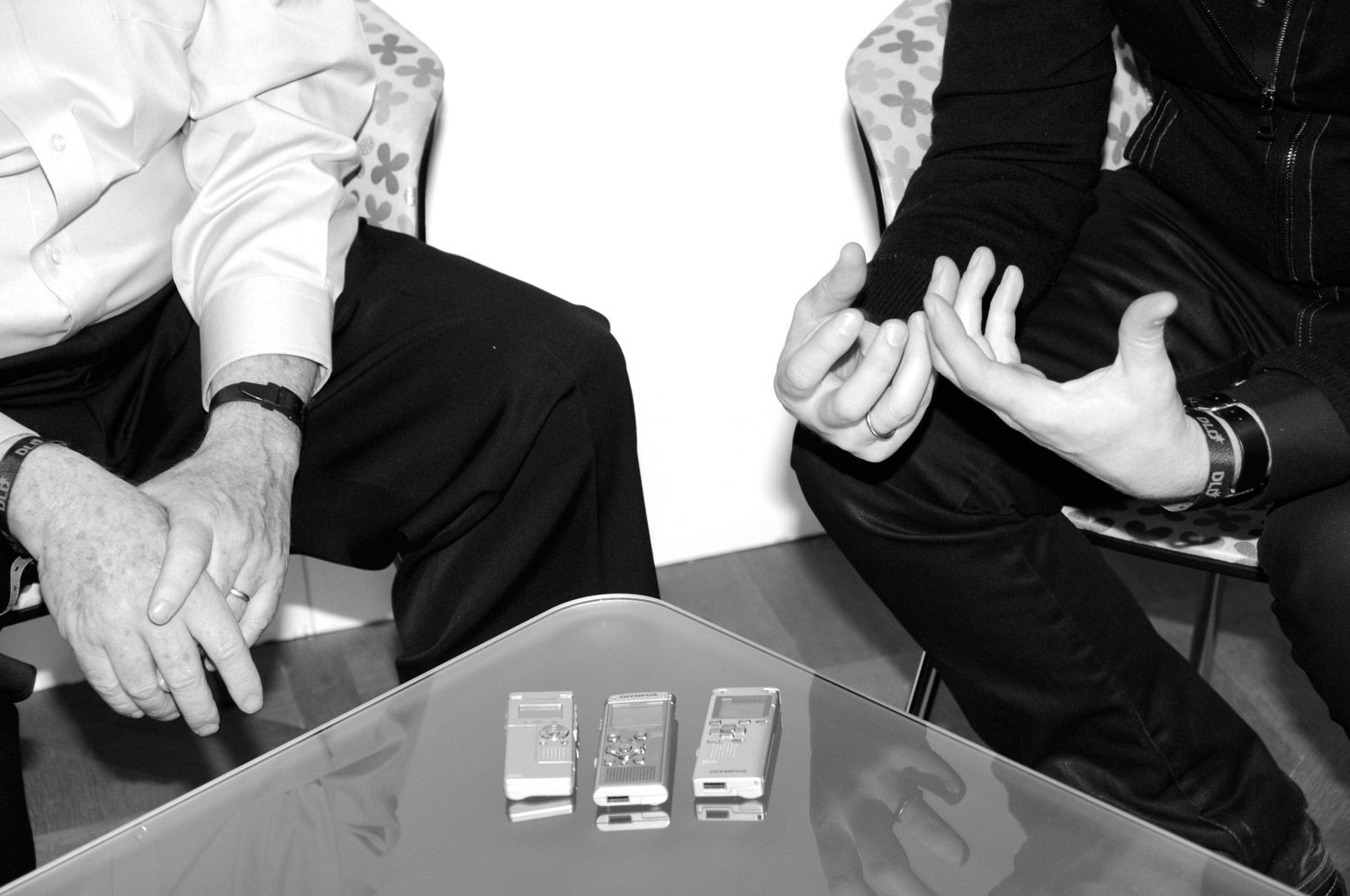The CHERMAYEFF Century
|Carson Chan
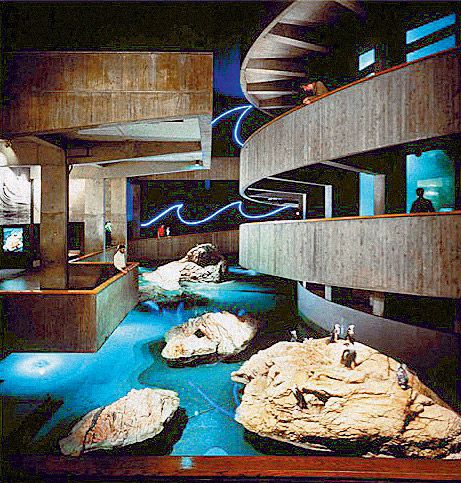
For the newest wave of cultural observers, the name CHERMAYEFF may not mean much. But to flip through the hidebound epic of their collective lives, is to realize the depths of their influence in the world of architecture and design.
Their tale has been spinning out for more than a century. It’s the ascension of Serge, a young Russian tango dancer in Jazz Age London, who ended up a pioneering cynosure of American architecture education (Sir Norman Foster: “At Yale, Serge Chermayeff had an incredible impact on me.”). It’s about his sons, Ivan and Peter, whose combined output has quite concretely shaped public space for countless millions. Ivan, the original Don Draper, gave NBC its rainbow peacock emblem that greets viewers every day before the news; Peter has led the design of the world’s most cherished aquariums. Together, the brothers reconceptualized Boston’s transit system: they color coded the train lines, and named it “the T.”
The story continues with Sam, Ivan’s son, a rallying leader and Kazuyo Sejima/SANAA’s right-hand man at the last Venice Architecture Biennial, who recently founded an architecture partnership in Berlin. We meet Frank Lloyd Wright, Buckminster Fuller, and the Gropiuses in their New England home where Ivan and Peter would spend weekends in their youth; we travel from the Caucasian steppes, to Britain, and a scramble of American cities before flying eastward to Tokyo. We share in their family gatherings, and see how dinner table conversations can profoundly alter the fields of architecture and design for generation upon generation.
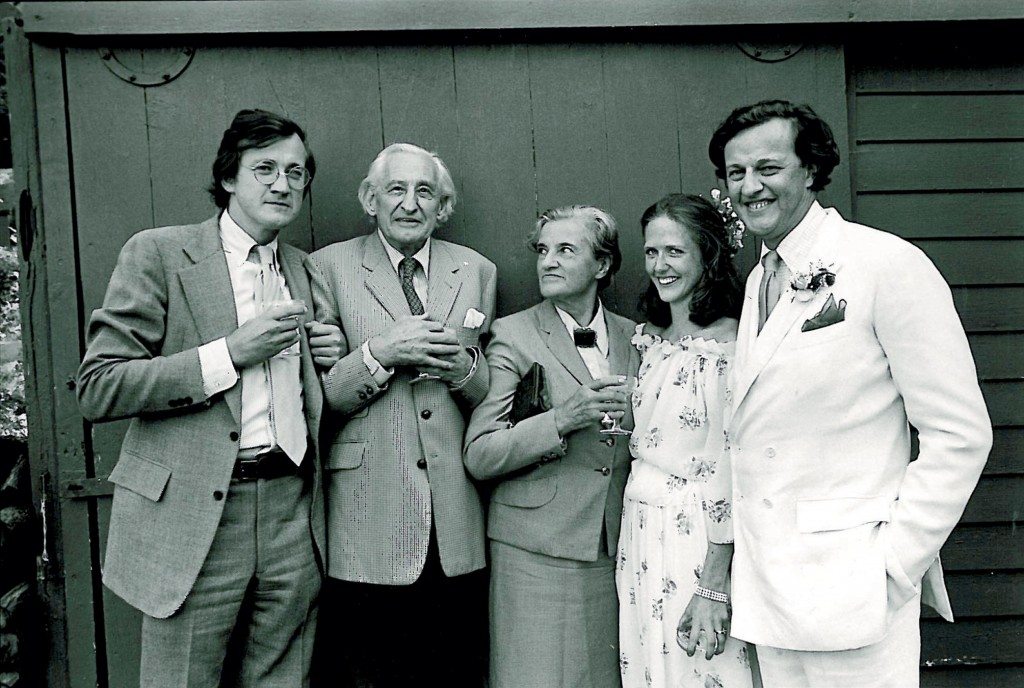
Catherine Chermayeff’s parents, Ivan and Sara, were hanging out at their friend Miles Davis’s house the night before she was born. Childhood summers on Cape Cod were spent exploring wooded paths and having sleepovers with her friend Francesca Breuer, Marcel’s daughter. Everyday life for her and her family is something that filled the pages of our history books. Not only were they there when it happened, more often than not, they were the ones that made it happen. Intelligence and creativity, sure, but is the drive to overachieve hereditary as well? Do ambition, resolve and elbow grease travel down generations? The Chermayeff pool attests to the likelihood of this: it is reliably peopled by distinguished Type-A creatives. Catherine became the projects director of Magnum Photos, the famous photo agency founded by Henri Cartier-Bresson, and her youngest sister, Maro, is an Emmy nominated filmmaker and department chair of social documentary film at the School of Visual Arts in New York. The middle one, Sasha, has since childhood produced paintings of chromatic exuberance. Her works “hold the eye by means of an ambiguous drama,” read a New Yorker review. If creativity and the arts in general permeate the brood, architecture and design are fields that mostly single out the men. Their saga starts at the turn of the 20th century with Serge Chermayeff, designer, architect and teacher. His sons, Ivan and Peter pursued and succeeded in design and architecture respectively, and Sam, Ivan’s son is also an architect, in Berlin. Stating their professions seems almost to reduce the scope of their collective influence. Not merely defined by vocation, these Chermayeff men, in their own way, have successively made indelible contributions to the canon of Western architecture and design.
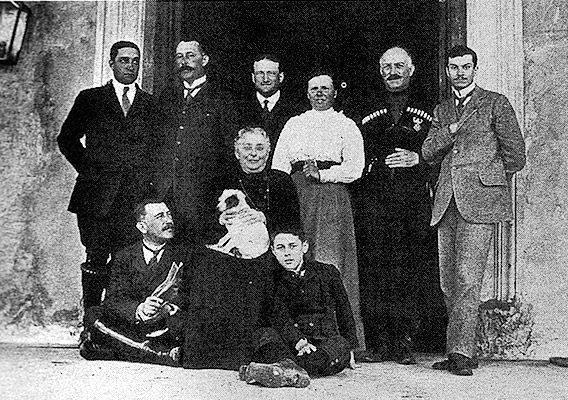
Serge Chermayeff was born in 1900 and his life, like the century, was characterized by monumental shifts and exponential progress. How a farmstead childhood in the Caucasus led to a professorship at Harvard, besides an immense intellect, requires novelistic turns and chance events that Serge’s biography dependably enumerate. His grandfather, Akim, reared bulls in Spain, and after delivering a select herd to the Russian Priwnce Kropotkin, he settled in the Caucasus, struck oil, and settled into rural mercantile life (Akim inspired the engineer character in Alexander Solzhenitsyn’s novel, August 1914). Serge’s father, Ivan, like Serge, was born in Grozny, Chechnya, a former Russian military outpost. He lived richly, kept a sprawling apartment in Moscow, married a gambling voluptuary, and cultivated a taste for ballerinas. Serge, and his sister Nina, rode around in troikas and learned English, French and Russian from a fleet of governesses. At 10, Serge was sent alone to prep school in Britain. It’s no longer known what his grandfather’s last name was in Spain, but “Issakovitch” was issued to him by the Russians when he required a passport. Despite his technical yet obvious Jewishness, young Serge queued up with the other boys to be confirmed by the Bishop of London. The Bolshevik Revolution in 1917 decimated the family’s wealth. Accepted to Cambridge but suddenly unable to afford it, the maddened teen launched a suitcase of devalued Russian currency out his prep-school window. Life had been fair to him thus far, and he saw no reason why it should not continue to be. He was determined that his family’s financial reversal was not going to hold him back. Money was needed, if not for subsistence then for mental comfort, and after a short stint as a press translator he found work as a ballroom dancer.
This, he naturally excelled at; tall, long limbed, lean, his expressive face framed by dark hair greased into a side part and articulated by an ample, exotic-looking
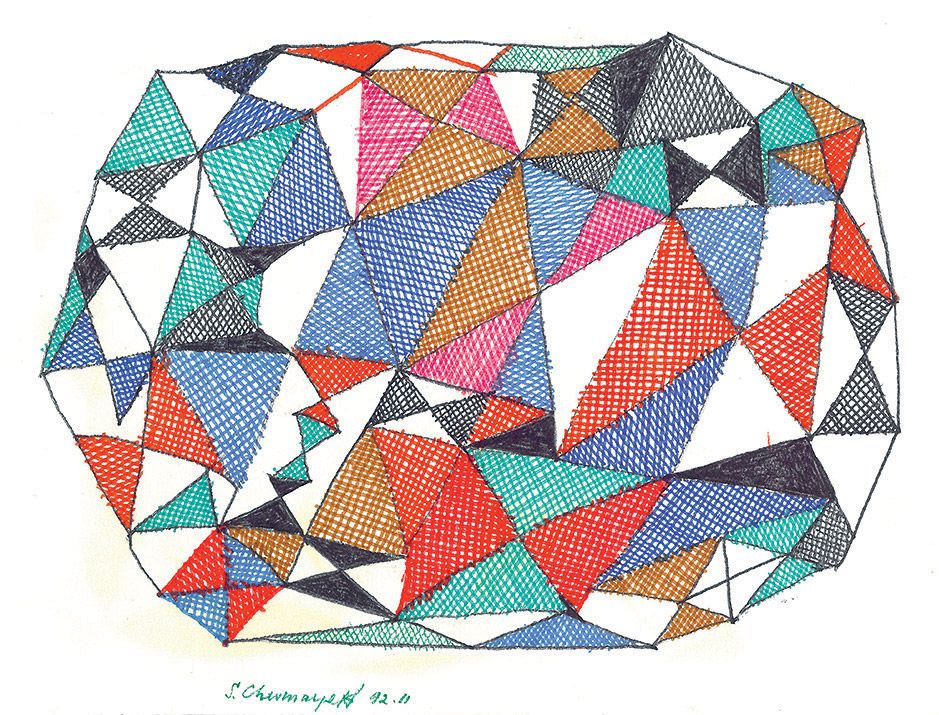
nose, Serge quickly became recognized as London’s it-boy. He became a dandy. “The Savile Row tailors used to give me suits, tail coats and evening stuff simply because I was such a classy dancer.” Musicians stopped when we entered the clubs. He sailed to Argentina when he was 22, learned tango, and returned to London to win the World Tango Championship when he was 27. Dancing, it seems, made Serge realize something that he would command for the rest of his life: an audience.
In 1928, Serge was hired at Waring and Gillow furniture makers as a designer. Throughout these years, his parents were living in Paris – paying their way by pawning off jewelry – and with each visit, he was exposed to the modern design trends that were taking hold on the continent. The same year he was hired at Waring and Gillow, he was charged with designing an exhibition of modern furnishings. For it, he and another young colleague designed round glass tables, credenzas of spare geometric panels, rugs and lampshades of complementing forms, and tubular steel furniture, the first of its kind in England. The show was an instant hit, and it propelled him swiftly into lecture halls, commissions, and private clubs, where he would meet his wife, Barbara.
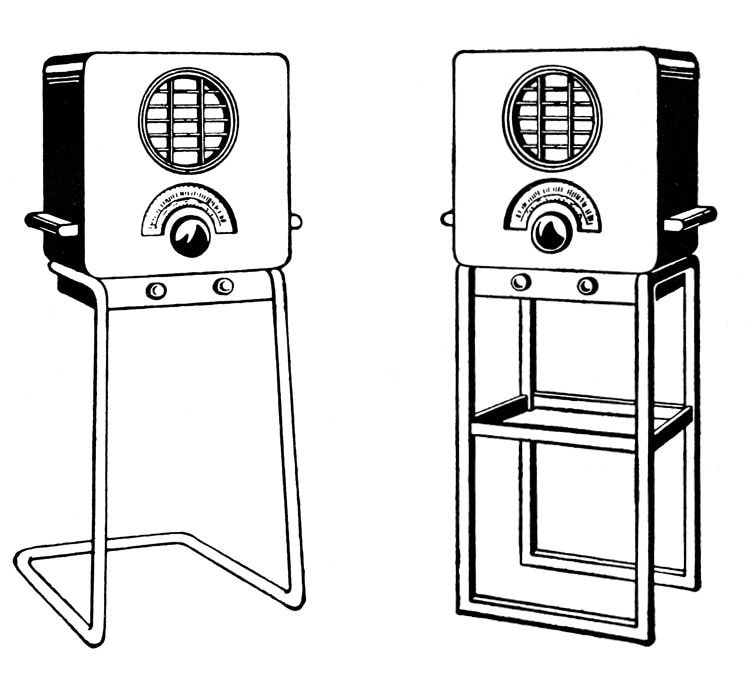
In the 1930s, the practicality of design objects was as important as its aesthetics, but it was his modern sense of form – perhaps combined with his striking physical appearances – that brought him into prominence. Design commissions came in spades: clocks, radios, housing, houses, flats, recording studios for the BBC. Life was again enjoyed, and much sweeter to savor now that it was completely self-made (he changed his last name to Chermayeff when his father died in 1924). He and Barbara played golf every weekend in the first year of their marriage; the head-waiter at the Berkeley Hotel knew to keep a pair of Wimbledon tickets for him; he was the go-to man to design Claridge’s hotel’s new dining room. As the decade advanced, so too did his circles. Serge became friends with Henry Moore, and started an office with Berlin architect Erich Mendelsohn on 173 Oxford Street. The office only lasted for three years, despite many realized commissions, but together they designed one of modern architecture’s enduring hallmarks, the waterside De La Warr pavilion at Bexhill-on-Sea. Serge had no formal architecture training, but elected as a Fellow of the Royal Institute of British Architects, he became one of the country’s most celebrated modern architects.
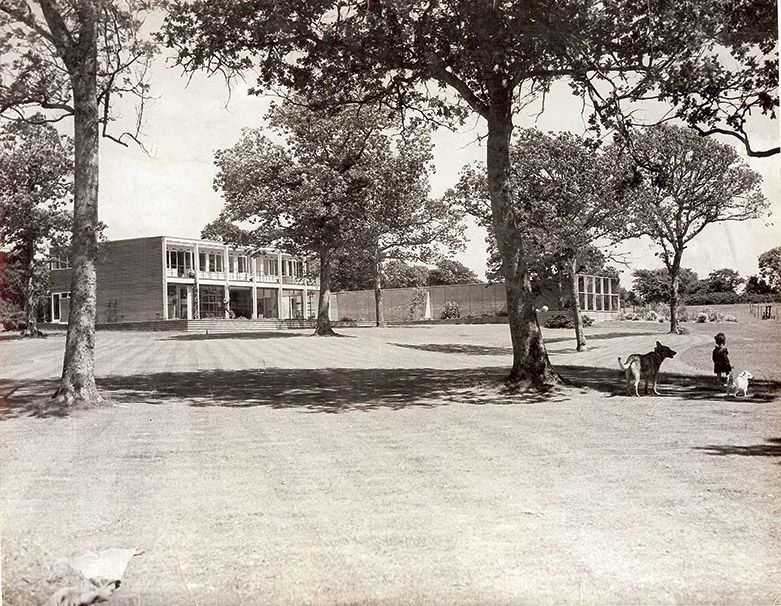
Ivan was born in 1932, three years later came Peter, and that same year Serge bought 84 acres of land owned by the Bentley Farm estate in Sussex. There he would build a family home – a low-lying timber box with a ground level of floor- to-ceiling glass that opened fully to spill the living room into the green waves of the countryside. A Picasso head hung upstairs, a Calder downstairs, and Serge commissioned Moore to make a stone sculpture for the yard. Little Ivan and Peter used it as play furniture; Moore’s Recumbent Figure (1938) would later be considered a seminal piece for the artist, exhibiting in MoMA’s sculpture garden until its purchase by the Tate. Serge called the house Bentley Wood, after the wood that much of the property sits on, and it became known as Britain’s first modern home. Widely published, and hotly lauded (Charles Reilly in Architects’ Journal called it a ‘regular Rolls-Royce of a house’), Bentley Wood drew an elderly Frank Lloyd Wright in for a visit. On a cloudless summer day, the old man came by during his first trip to England. After a short tour, they sat in the yard – Serge’s hat perched on Wright’s bald head to protect it from the sun. “Well, Mr. Wright, what do you think?” Looking into the distance to where the garden eased into the woods, he said, “It’s seven inches too tall.”
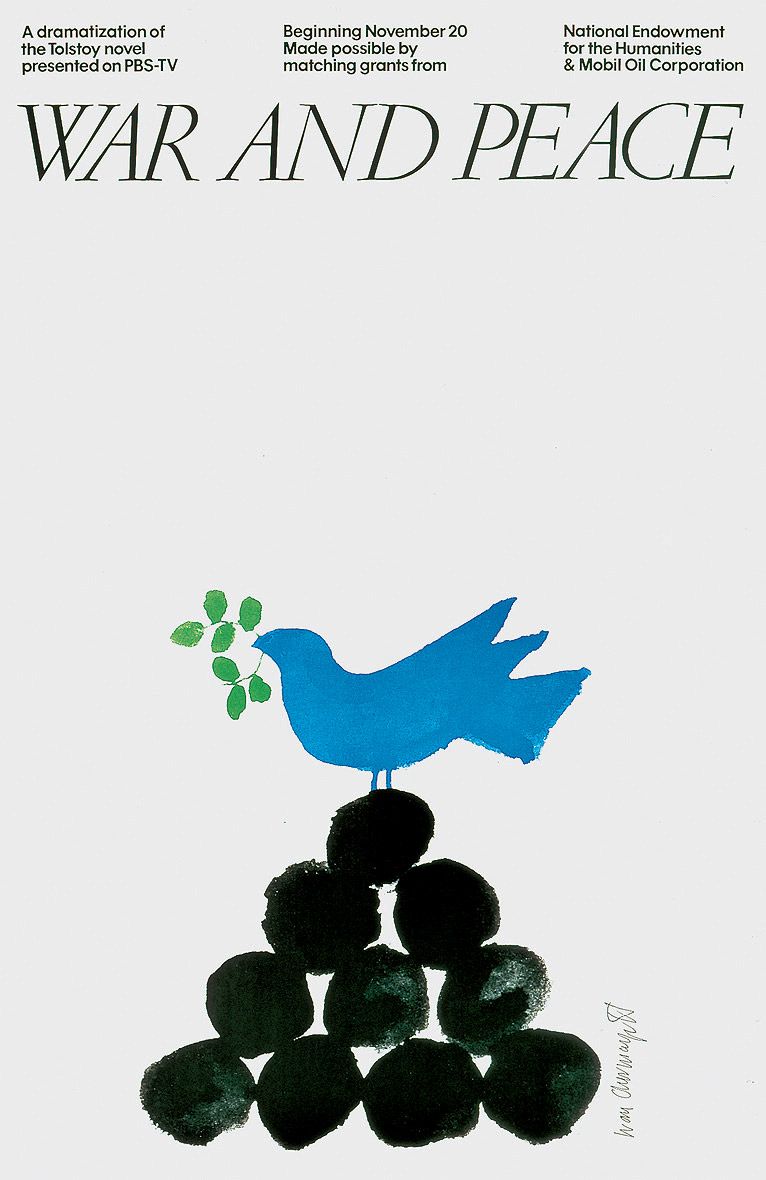
By 1940, Europe looked hopeless for the young Chermayeff family. Furniture design was not high on anyone’s mind and everyday life became increasingly hard to maintain. The wartime sumptuary measures unnerved the handsome couple – finding bicycles in Sussex at the time was almost impossible. They decided to come to America (Barbara’s fortune teller foresaw their emigration). Caught harrowingly between subs below and the Royal Air Force above, their first ship was forced to return to Belfast; they sailed off for Montréal again two weeks later. From there, Serge and Barbara made their way by car across America in search of jobs. They left the boys with Walter and Ise Gropius in Lincoln, Massachusetts, and sent for them about a year later when things seemed relatively settled in Oakland, California. Ivan and Peter, with Ivan no more than 8 years old, Peter barely 5, travelled for days alone to California. The kindness of some nuns on the same train ensured a safe passage, but even without them, Serge saw no reason why his sons could not travel by themselves. After all, he must have thought, he himself made the arduous and often mountainous trek from the Caucasus to London alone as a child of 10. Later when Ivan and Peter attended Phillips Academy Andover as borders, they would spend weekends with the Gropiuses. Walter and Ise were inveterate bird watchers and they taught Peter how to lure them to their window with seeds and flowers. Walter also taught Peter how to identify and shoot at cowbirds, the cuckoo’s cousin, with a 22 caliber pistol. Those he loathed.
California was fine – a sunny intermezzo before Serge’s life really began back on the East Coast. Serge had a contract in the Northwest and he would often take the whole family on the drive north from California. On one such trip, when it was reported on the radio that the Soviets had joined the war, Serge stopped driving and got the whole family out to do a war dance around the car. He had speaking engagements at the San Francisco Museum of Art, designed some houses, hung out with Amelia Earhart, and by 1942, they all packed up for New York where Serge was hired to chair the art department at Brooklyn College. Almost immediately, he changed the department’s name from art to design. There is a shape to life and this can be designed, optimized, improved. In the 1940s the world was alive to the idea that the pragmatic and the ideal could in fact meet through ingenuity. In 1939, television transformed mass communication; in 1941, penicillin, used as an antibiotic, revolutionized medicine; the atomic bombs of 1945 unambiguously allowed for the reality of whole cloth annihilation. If we could design for our extinction, so too could we design for life to prosper.
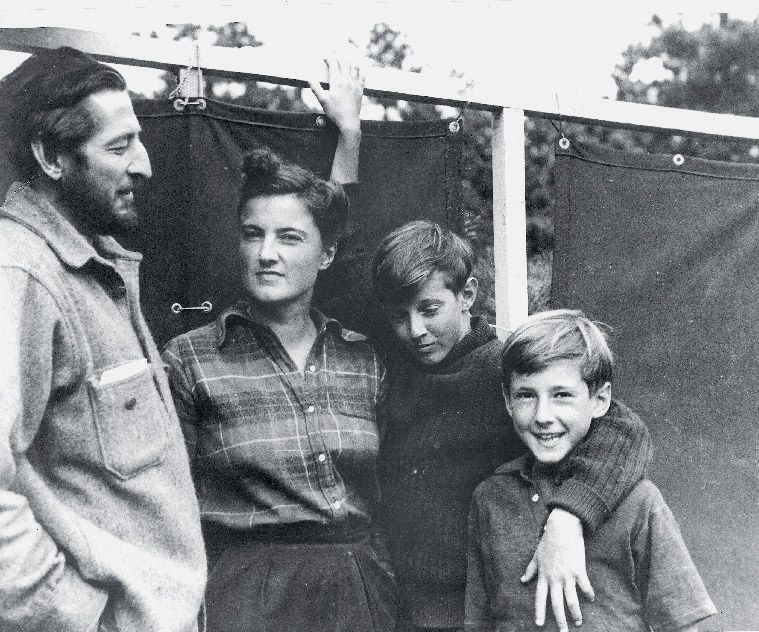
In New York, as in California, Serge’s name preceded him. He and Barbara were quickly entered into society. The couple became eligible for American naturalization in New York and they called Phillip Johnson and MoMA director Alfred Barr as their guarantors. On the day of the hearing, Johnson and Barr arrived at the courthouse to vouch for them in full matching eveningwear: top hats, cummerbund, tails, rolled umbrellas. Bertrand Russell crashed at their two-bedroom between apartments. They were entertained and they entertained in kind. Ivan and Peter grew accustomed to sleeping on piles of coats as their parents wiled away boozy evenings with friends, where Serge reliably prevailed over every conversation, even ones not in his field. Serge’s argumentative nature and rigid intellectual position is often noted by his critics, but they reductively confuse passion with ire. His close friends and most talented students knew his tough, emphatic and often domineering manner as the expression of an inspired pedagogue, hell-bent on arousing a combative and creative spirit, but not out to condescend.
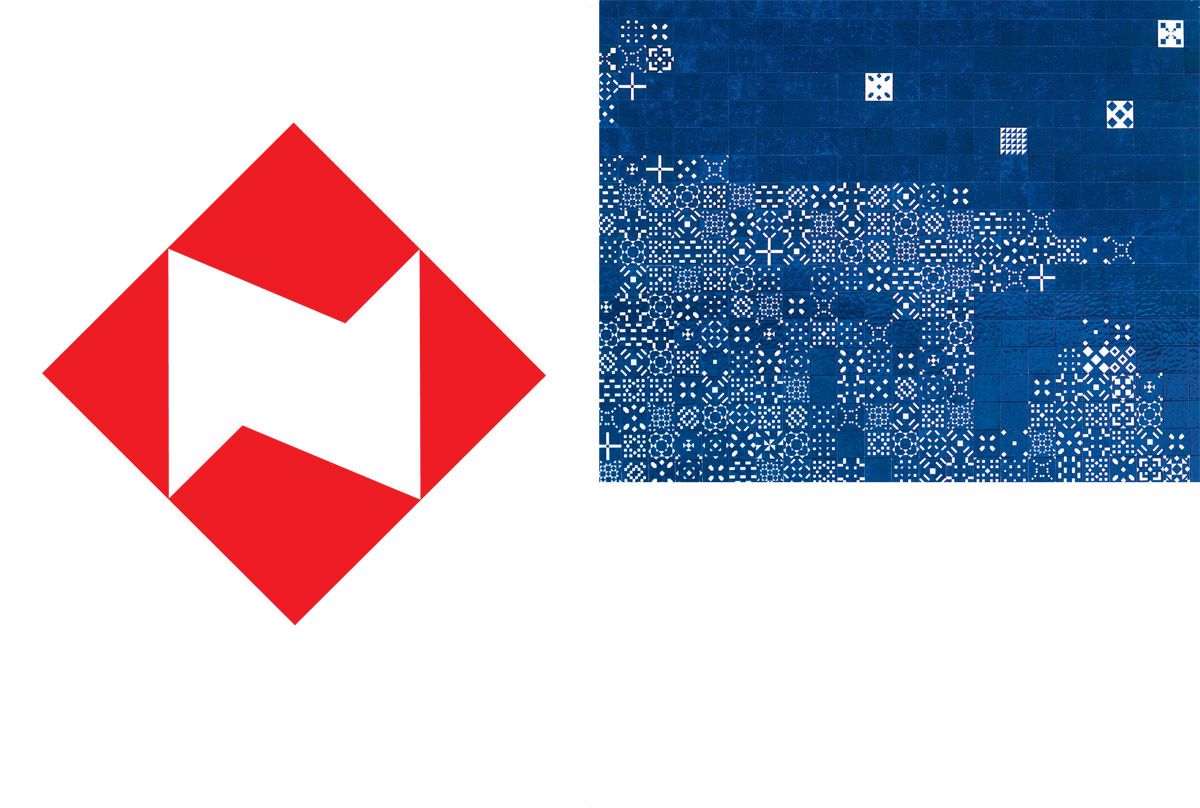
By 1952, Serge was teaching at Harvard – a welcomed consolation after the Institute of Design in Chicago, under his directorship, lost its financial backing and was subsumed within Mies van der Rohe’s Illinois Institute of Technology. At Gropius’ invitation, and together with Josep Lluís Sert, the famous Spanish architect who was newly installed as dean, began a new phase for the architecture school that was to define its legacy. One of the first things Serge did at Harvard was to devise a new foundation course called Environmental Design. Serge believed in a socially holistic approach to design and he took the classroom as a microcosm of how real world design could be approached. Where architecture, urban planning and landscape architecture students traditionally followed different course plans, Environmental Design was a class that brought them together, solving problems by playing off each other’s separate strengths. His strong convictions for logical reasoning, critique over opinion, a modern positivist humanism, and for design that is materialized through intellectual journeying and not a crude desire to blindly produce were impressed deeply upon his students and colleagues. Harvard’s renown grew through Environmental Design, and it became the basis of most design programs throughout the United States. “There was no way of escaping the importance of Serge,” Louis Bakanowsky said about his former teacher. “You could hate him, or dislike him, but you had to respect the man for how he approached the subject. He did not compromise. [His] values were too high. As a result, he could be quite brutal.” Mediocrity threw him into conniptions; he ignited with the slightest variance to his version of perfection. In 1962, he joined the architecture faculty at Yale, and stayed there until his retirement nine years later.
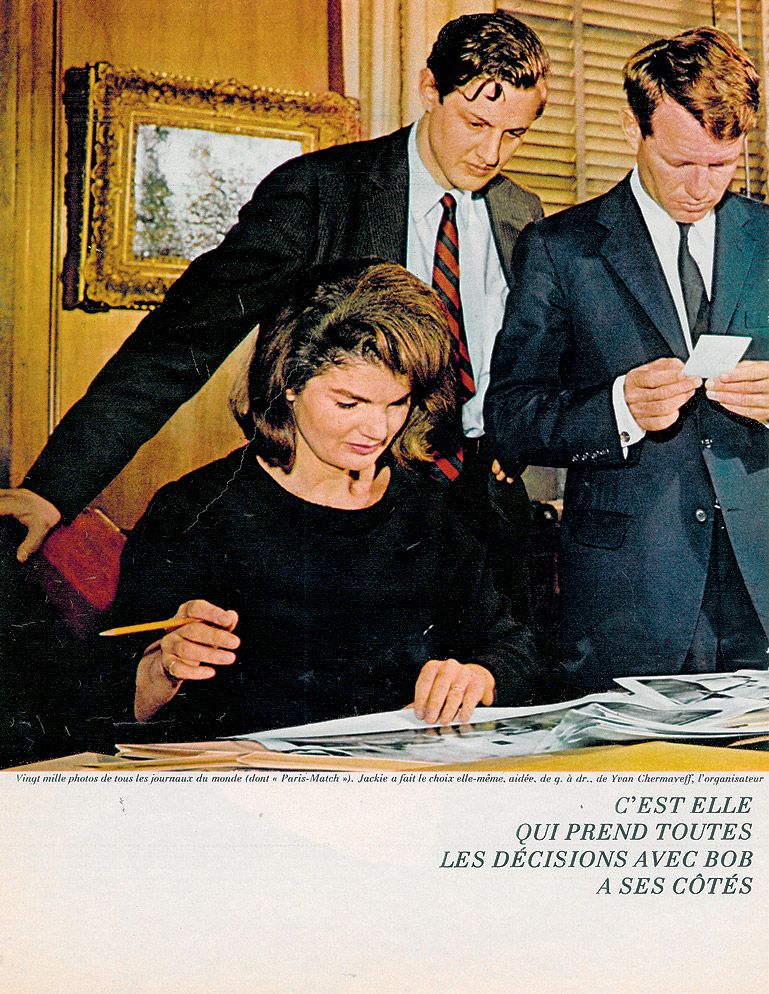
Serge became notorious for his dyspeptic personality at work, but with his boys he was soft-handed, nurturing their whims into blossoming imaginations. The image of Serge the gardener comes to mind. In an address writer Victoria Milne gave in 1994 on Serge’s legacy, she recounted the story of how he created the garden at Bentley Wood by throwing bulbs into the lawn, planting them where they fell. Butter daffodils, white narcissus, great sheets of bluebell and primrose flowered purposefully by deed of his casual scattering. “That, I think was one of the most beautiful things,” Serge told Milne. Just as easily, Serge planted a sense of initiative and wonderment in his sons. Out on Cape Cod, where Serge kept a summer house since the early 1940s, they would spend afternoons making sculptures by the water out of whatever was laying around. Ivan liked to draw, Peter liked making things and Serge, the father (not teacher), allowed space for both to make their own way. “Our father was a stimulus machine,” Peter told me from his office in Andover. “He knew how to turn our minds on.”
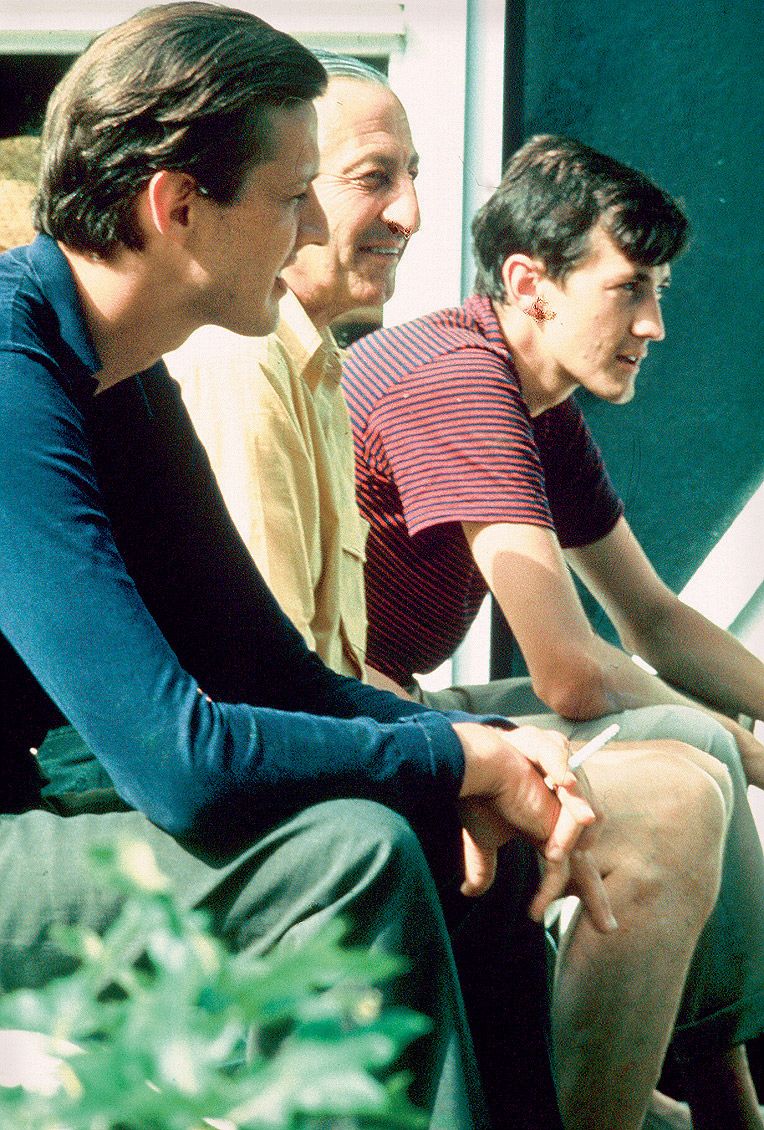
As it were, Serge was also Ivan and Peter’s teacher at Harvard, and his holistic view of the built environment took hold in the evolution of their respective practices. Immediately out of school, the brothers, along with Louis Bakanowski, Paul Dietrich (also a former student of Serge’s), Alden Christie, Thomas “Tom” Geismar and Terry Rankine founded Cambridge Seven, an architecture partnership that sought to engage with design in a wider field than that prescribed by buildings. At 22, right out of Harvard, Peter received a grant to make a documentary film about the effects of nuclear weapons – a project in a field that he found far more urgent and immediate than building design. Paul Dietrich had approached the brothers about starting an interdisciplinary firm – Ivan and Tom already had a successful graphic design practice – but nothing came of that suggestion until a few weeks later when Peter was at the Middlesex Fells Zoo just north of Boston. He found the experience so adverse that he approached the zoo director and offered his nonexistent firm’s soi-disant expertise to renovate and improve the aging facility. The director, Walter D. Stone, surprisingly agreed to attend a presentation of their pitch. The boys were potent, and their proposal was compelling, but impressed as he was, Stone had no budget at his disposal. He did however introduce them to Lee Finner, a herpetologist from Detroit who was in town to meet architects for a new aquarium set to be built on the harbor, east of Boston city center.

Beating out the competition, the young men built the New England Aquarium in 1969. A year later, the aquarium’s cylindrical Giant Ocean Tank opened to the public; 40 feet in diameter, at the time it was the largest of such aquariums in the world. Blue light filled the interior of the building. Within, audiences were corralled into the other side of reality by the exhibits. Visitors fell silent as schools of gleaming mackerel eddied in front of their eyes; nurse sharks glided into view; giant groupers, with eye balls the size of a man’s fist floated above their heads, weightlessly like planets. With this project Peter had found his calling. “I became fascinated with these spaces where people could lose themselves in,” he recently recalled to me. “I wanted to take them out of their normal surroundings, to allow them an experience of wildness, to show them the effectiveness of nature.” Cambridge Seven made many other types of projects but Peter would lead the aquariums. (“We used to call him the ‘wizard of wet’,” Catherine told me recently in Berlin.) Over the years, and later in his own separate practice, he would build them in Baltimore, Chattanooga, Osaka, Genoa, Salmiya in Kuwait, Seward in Alaska, and his largest one in Lisbon.
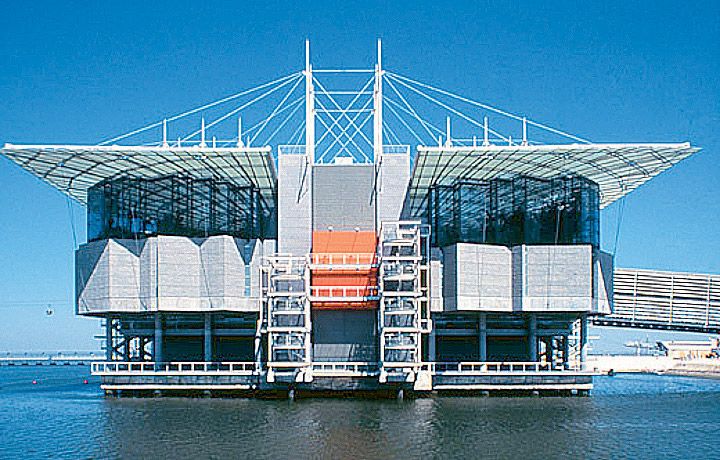
The Lisbon Oceanarium sits like an alien hangar at the end of a pier. On windy days, the Tagus estuary would spray up onto visitors as they made their way into the building. Completed in 1998 when the city hosted Expo ’98, the Oceanarium, in part, is Peter’s fulfillment of a longtime dream to present the untamed expanse of nature within a single building. For decades, he’s had ideas to build a skyscraper zoo in downtown Boston, and a veritable Noah’s Ark in Moscow (the drawings for this showed birds, giraffes and elephants around a building-sized aquarium). At the Oceanarium, Peter has transplanted entire marine ecosystems into giant tanks, as if whole sections of nature had been suctioned from the Earth’s oceans. Craggy tidal pools of the North Atlantic, the Antarctic coast, the great kelp forests of the South Pacific, and tropical Indian coral reefs surround a gargantuan cylindrical tank, so immense that looking into it, one gets a view of the ocean floor. Swimming away, the fish recede from view as they glide into deep blue darkness. Schools of tuna, packs of silver barracuda, meaty spools of eel, most members of the chondrichthyes family (sharks, rays, chimaeras, skates), a rare ocean sunfish and about 16,000 other individuals representing more than 450 species live there.
Peter had always been enthralled by animals. When he was about 12, Serge took the family on a trip to New Mexico. There, on a tree, Peter found a sparrow hawk nest with a baby bird inside. He took the bird – neither parent thought anything of it – and brought it back to Chicago where Serge was teaching at the time. He fed it bits of raw meat, and Barbara allowed it to live uncaged in the apartment. It left droppings and claw marks on their modern furniture, but in general, Chimmy the sparrow hawk was well liked. It had a tendency of swooping down at the heads of guests, and one time when Buckminster Fuller came to visit, she flew to him and landed squarely on his bald head. Bucky didn’t flinch, allowed Chimmy to sit atop him, until Peter took her off. Serge too liked animals; he kept a number of German shepherds when he moved permanently to the summer house on the cape in the 1970s. Ivan didn’t care for dogs much. He allowed his daughters to keep one in their apartment in Manhattan when they were children, a black Scottish terrier named Bogey. He hated the dog, and one day, as the dog came to greet him, barking, he kicked it clean off the balcony. Miraculously, Bogey survived the fall, the girls rehabilitated him, but from then on it hated Ivan. The animosity between the two got so bad that they sent it to live with Serge and Barbara on the cape. The neighbors’ cat annoyed Bogey, so Serge shot it with a rifle.
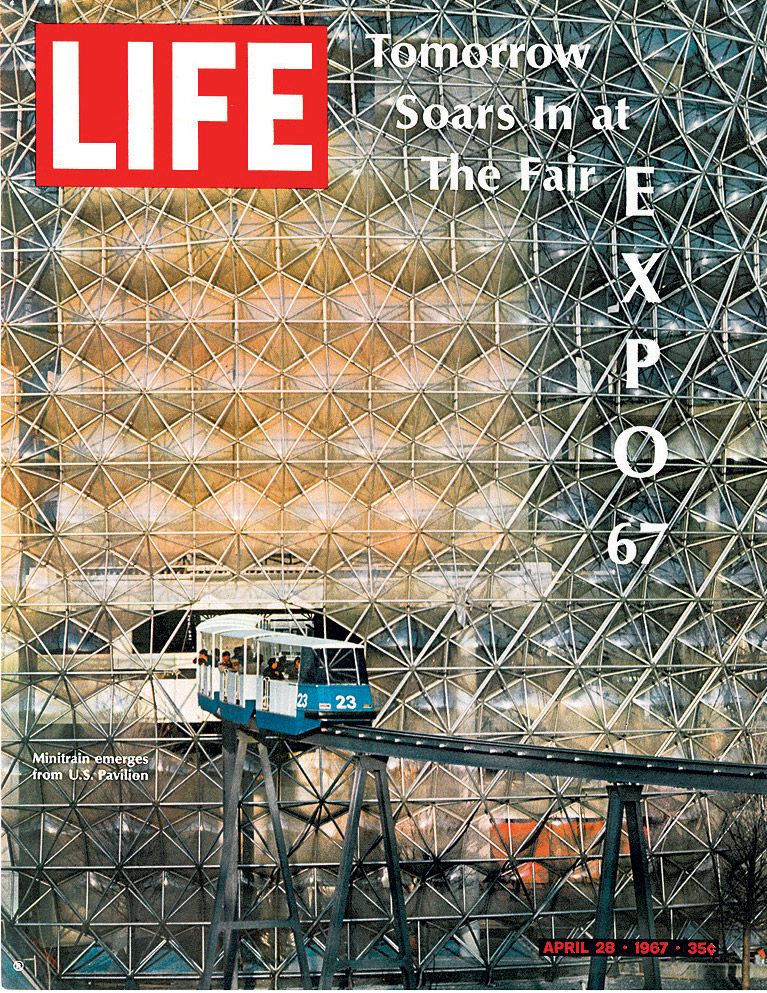
The Chermayeff family lore is replete with this type of a brutal, full-blooded kind of love that would find its way into ineffable situations. Sometime in the early 1940s, Barbara, with little Ivan in the passenger seat, was driving up Route 6 to their house on the cape to meet Serge. He was either messing with the door, or fated by some bungled lock, but without warning the boy tumbled out of the speeding car. Barbara’s heart drained; she was certain her son had just died, and either out of catatonic reflex, or a fatalist resolve, she drove on without turning back. In fact, the boy had not died but was bloodied and torn up by the fall. He limped home, in shock, dizzy and cursing, and entered the house to find his parents devastated, bawling from their supposed loss, mourning his death.
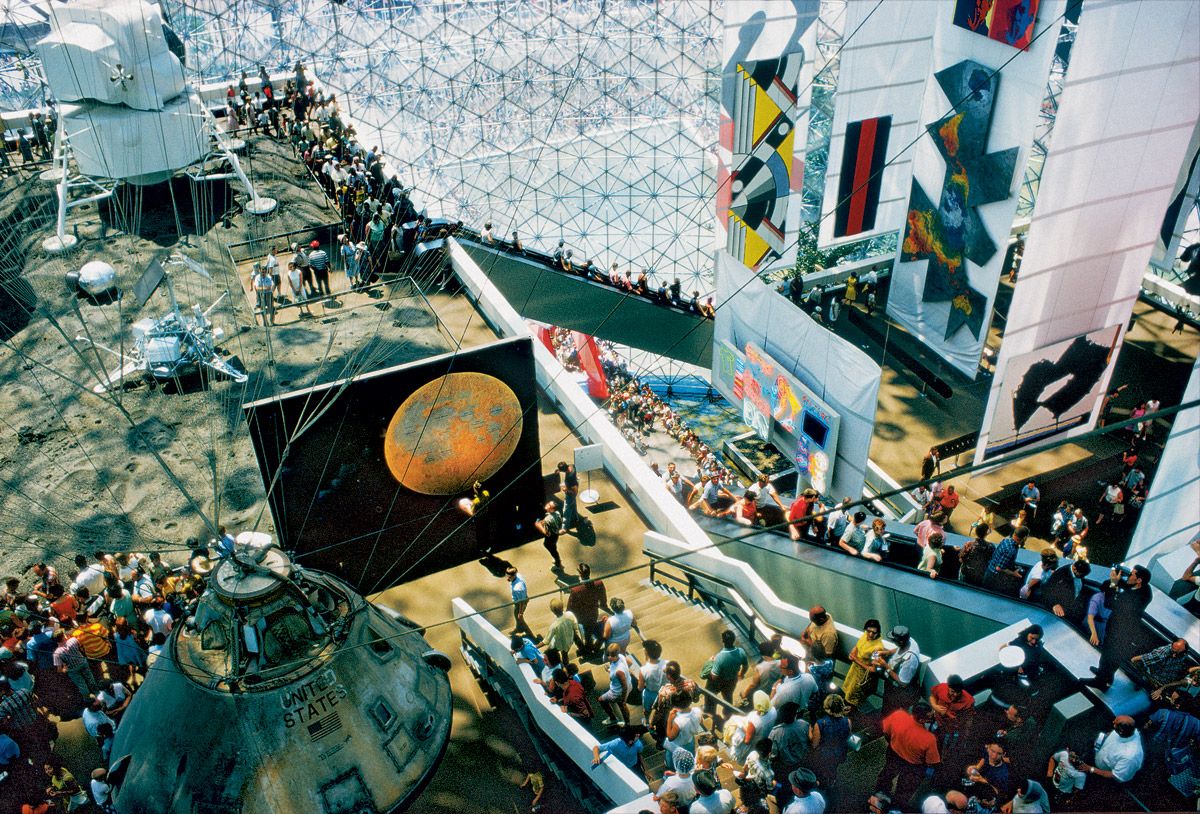
The New England Aquarium was Cambridge Seven’s first commission, but their first executed project was in fact the US pavilion at Expo ’67 in Montréal. The pavilion was designed by Cambridge Seven, with Peter heading the team, even though it is commonly attributed to Buckminster Fuller alone. Jack Masey, one of the design directors at the United States Information Agency at the time, was charged with producing the American pavilion for the Expo in Montréal. Masey approached Cambridge Seven about designing the pavilion in 1965, and they produced a design that featured a monumental transparent three-quarter dome, which enclosed floating platforms, like a giant snow globe. To realize it, Masey and the architects then asked Fuller if he would make the clear shell for them. At this point, all of Fuller’s domes were low and squat, and the prospect of building a long unrealized idea at an unprecedented scale piqued the old man. Fuller’s firm detailed the dome and fitted its cells with clear acrylic, manifesting his grandest structure and Cambridge Seven’s first project.
“Architects work on things that take a long time,” Ivan told an interviewer in 2007, “and often fail because of lack of funding or whatever reason. With graphic design there is the advantage that ninety-nine percent of what we do is produced.”
“Architects work on things that take a long time,” Ivan told an interviewer in 2007, “and often fail because of lack of funding or whatever reason. With graphic design there is the advantage that ninety-nine percent of what we do is produced.” The pace, visibility and immediate effect of graphic design attracted Ivan. Just a few short years after school (he graduated from Yale), he formed Brownjohn, Chermayeff and Geismar Associates in New York. Robert Brownjohn was one of his father’s top students in Chicago, and Tom Geismar was a classmate at Yale. They made ads, posters, album and book covers from a one-room office on West 56th Street. This was 1957; work had just begun on the nationwide interstate highways; the first commercial domestic airline was just months away from flying its first passengers; hair was cleanly parted, lapels were high, ties were trim; this was the jet age. The city teemed with an ideological decadence. Artists moved to the East Village to live amongst the Ukrainians and Italian fruit vendors, while uptown, fueled by postwar consumer spending, large corporations were fast becoming larger corporations. In the midst of all this, Ivan and his colleagues became the original Mad Men. Their knack for politicking quangos brought the firm lucrative contracts. In 1959, CA Magazine did a feature on them called “The Bold Young Men.”
Swept up, Brownjohn left for London in 1960 to a quick ascent (he designed the nubile silhouettes for the opening sequence of From Russia with Love) followed by a meteoric collapse (he overdosed on drugs). Not only did Chermayeff & Geismar continue, they thrived, and for the next half century, the firm would come to define American visual culture of the second half of the 20th century, their images and logos, ubiquitous, would burn into our visual vocabulary. They designed the Chase Bank’s indigo octagon (1961), and the Mobil Oil Corporation logo (1964) – its blue letters with a red “o” dependably dispersed along American roads and highways at gas stations like a comforting refrain. They gave NBC a rainbow peacock (1986), National Geographic its yellow frame (2002), Barneys New York its asymmetrical ‘y’ (1983), PBS its staggered profiles (1984) and in 1972, they planted the now iconic giant red “9” on the sidewalk in front of the “ski-slope” building at 9 West 57th Street. Pan American World Airways became the much more recognizable PanAm from Ivan and Tom’s consultation in 1957. Xerox, Time Warner, standards for American road signs, it’s hard to overestimate the degree to which their designs have shaped the way we see information in the built world. Perhaps the most impactful civic project carried out was in the 1960s when Ivan and Peter, with Cambridge Seven, reconceived the Massachusetts Bay Transportation Authority (MBTA) way-finding system. They were to give a new face to greater Boston’s public transit system. A capital “T” inside a circle symbolized the entire subway and above ground train system, and the lines were renamed for colors rather than the name of the final stop, which kept changing as the lines expanded. Cambridge Seven went on to build a number of Boston’s subway stations. About a million people ride “the T” every weekday and for Peter, this is how he and his brother’s practices dovetail into the tenets of their father’s teachings at Harvard: design is not the act of servicing the whims of clients, but it’s born from the need to problem solve, and holistically furnish the public with a way, an ethic, that allows for a sense of social identity and meaning. Like a road prohibition sign with the oversized letters “W” and “ST” replacing the diagonal slash, Chermayeff & Geismar’s recent logo for the Occupy Wall Street movement, commissioned by the New York Times, draws upon the most rudimentary of symbols to evoke the loftiest of aspirations.
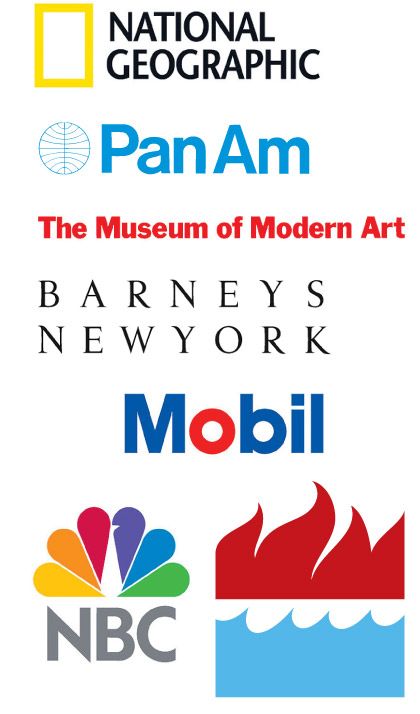
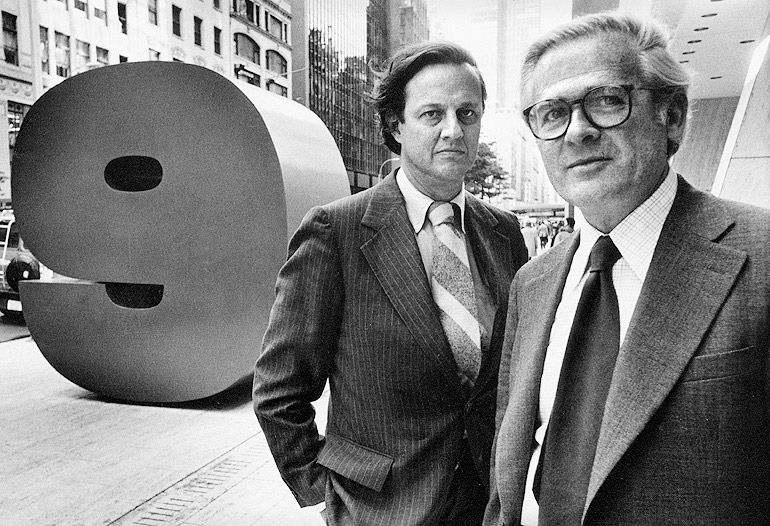
By the time Sam was born in 1981, his father was already a gray eminence in the design world. Ivan was on the board at MoMA and elected to the NY Art Directors Hall of Fame in 1982. His mother, Jane, was and still is herself an esteemed museum consultant. If anything, growing up in a penthouse on 81st and Lexington (his bedroom was a winter garden designed by James Polshek) gave the whole milieu of childhood a grand horizon. Outward, sociable, and an only child in practice (his sisters Catherine, Sasha and Maro were much older and lived elsewhere), Sam has always preferred doing grown up things and congregating with adults. Before his 10th birthday, Sam gave the introductory speech at the Aspen Design Conference where Jane gave a keynote. Sundays were more often spent at the nearby MET than playing softball in Central Park. His parents took him along when they were in France for six months and Japan for four. Every morning Ivan would take Sam to elementary school on a little platform mounted to the front of his Alex Moulton bicycle. “We went downhill for three blocks to school,” Sam remembers. “I had a red Styrofoam helmet.” As a child, Sam idolized his father. He’d marvel at Ivan’s home studio and go through his wide, oak flat-files. Ivan would smear Indian ink on his little boy’s face and feet, blotted him with paper and they would make collages from the prints together.
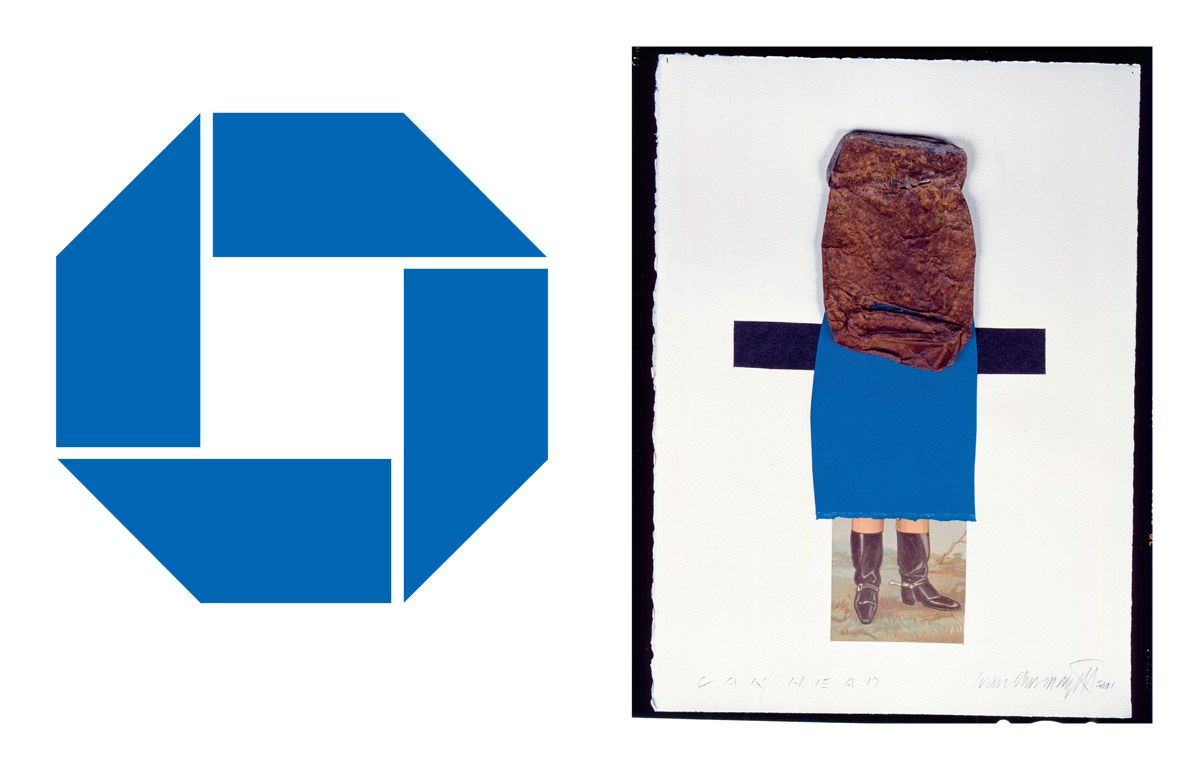
“I remember visiting Jack Larson’s house in the Hamptons as a young child,” Sam told me, recalling a visit to the fabric designer’s beachside property, “and thinking that I wanted to be an architect and design buildings when I grew up. The guy’s house was only two-stories and it had an elevator!” Ivan and Jane gave Sam his freedom – as much out of their liberal beliefs as it was a result of their own busy lives – and by his own admission, from childhood till university was a sustained period of reckless delinquency, and even afterwards, growing ambitions were always combined with the intensity of immediate experience. “I loved cars and motorcycles.” He had a 1972 Honda CB200T, a 1980 Moto Guzzi La Mans 2, a 1972 red MGB, and two convertibles, a 1968 white Chevelle, and a hand-me-down 1986 gun metal BMW 733i – pretty much simultaneously when he was in architecture school at the University of Texas in Austin.
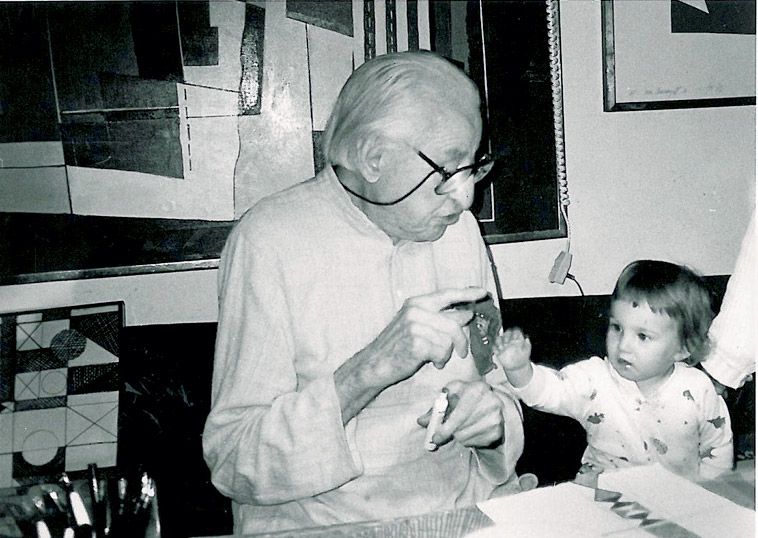
It wasn’t until after school when Sam went to Tokyo on a Swank Fellowship research grant that his life began on its current trajectory. “I applied to do research on Japanese construction, which never happened because I sent in a portfolio to SANAA – whose work I’ve always admired. A week later, Sejima-san and Nishizawa-san took me in on a provisional basis.” Tokyo had no comparable reference points to the Upper East Side. His first apartment in Togoshi-Ginza was a 300 square foot confection of fake wood, which was no bother because all waking hours were spent at the office. Work at SANAA was conducted in Japanese and epigrammatic English, and the firm’s ethic of relentless perfection dramatically brought focus to Sam’s life. His first project there was work on the Bauhaus Archive in Berlin. Sitting in the office next to Johanna Meyer-Grohbrügge – a beautiful, headstrong young woman from Sigmaringen in southern Germany – was a situation that presents itself now as an auspicious token of their current partnership in Berlin.
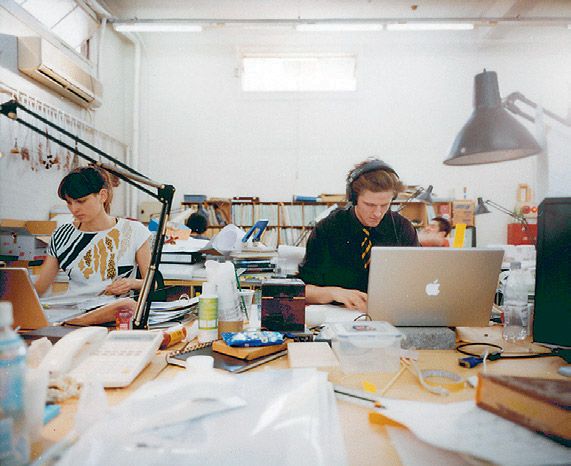
More than five years on, after leading separate teams to design and realize SANAA’s Serpentine Pavilion, and organizing the 12th Venice Architecture Biennial together with Sejima, in 2010, Sam moved to the German capital together with Johanna to found their architecture firm, June14 Meyer-Grohbrügge & Chermayeff. They hit the ground running, collaborating with artists like Olafur Eliasson, Thomas Demand, a commission from 3M, an exhibition design for video artist Lynne Marsh. They’re making inflatable aluminum coffee tables and mirrored side tables with arched legs like a bridge – wry humor with a minimalist’s practicality. Having lived far from home, first Tokyo, now Berlin, Sam seems to be someone who finds no security in convention, instead drawing power from a work-hard-play-hard approach that keeps him up late in Berlin barrooms, and sends him early into the office the following day. Neither Sam, nor his father, feign any academicism – the act of making and working itself forms a virtue. When asked, “what is the great[est] challenge you foresee in the city’s future,” he ripostes, “finding clients.” (Incidentally, when designboom.com asked Ivan what his favorite time of day was, he replied, “when the check arrives in the mail.”)
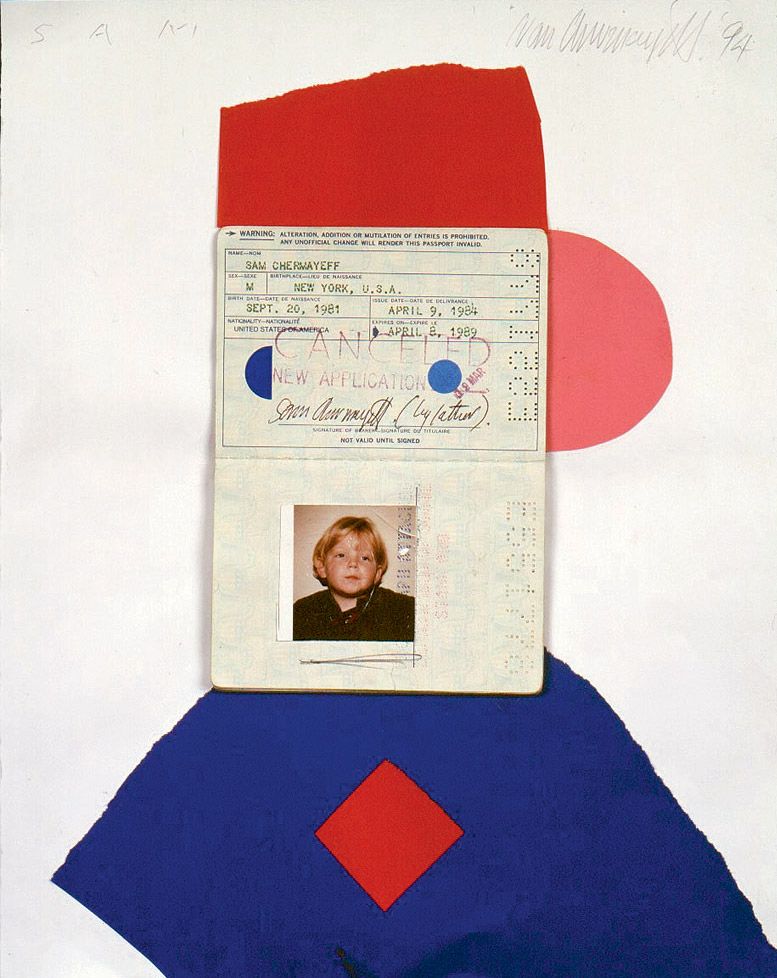
Like his father, and his father before him, Sam is tall, slender, with a tapered face animated with deep large eyes and a directed nose. His robust tangle of unwashed dirty-blond curls lends him a charming insouciance (his current apartment in Berlin lacks a bathroom and shower, like his place in London when he was on exchange at the Architecture Association). The physical affinities between Sam, Ivan, Peter and Serge are obvious enough from photographs, but the more nuanced familial ones are enshrined at the house Serge built in Truro, half way between Wellfleet and Province Town on Cape Cod. From 1942, not long after Serge and Barbara first moved to America, they leased about 12 acres of wooded land marked with ponds, close to the Atlantic shore on the cape. It was a gray, wooden saltbox – a pitch roofed local vernacular (later, Serge would give it accents of red, yellow and sky blue). Overlooking Slough Pond to the west and crowded amongst scrub oaks, aspens and towering pitch pines, the house epitomizes rural Americana in its coziest incarnation. Here, Serge was amongst the giants of architectural modernism in a physical sense; Marcel Breuer, Eero Saarinen and György Kepes were neighbors. The theorist and landscape architect Charles Jencks has a house around there still. People of letters, Edmund Wilson and Mary McCarthy had a place close by.
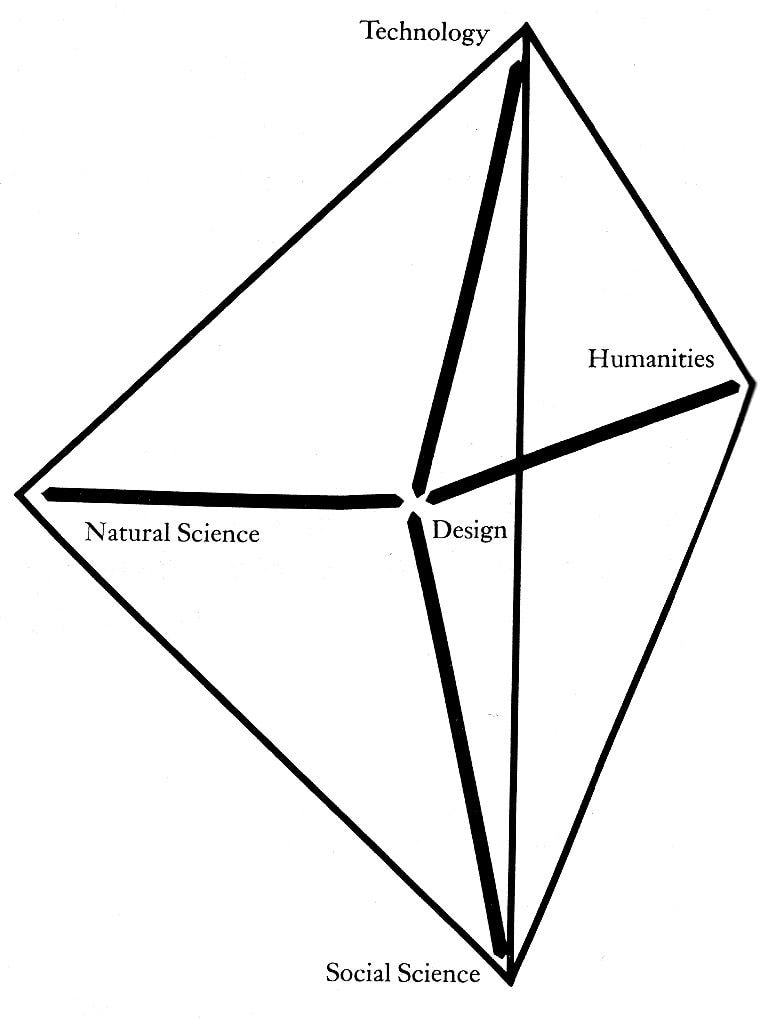
Serge and Barbara were living full time on the cape by the 1970s when he was retired. There was a thought in 1972 to move to San Juan – they even bought land in the center of the old town – but the cape was where they stayed, where the children, grandchildren and their children would come and stay year round, and where old friends and colleagues would wassail over stories from the past. It’s a house that still stands today, having changed remarkably little despite the years; it’s an emblem of how once, they were all young together. Serge passed away on the cape in 1996, Barbara some years later, Ivan turns 80 next year, but through the dizzying, peripatetic expansion of life and its accomplishments, of history, the family remains tight. Kenneth Rexroth, in his introduction to Serge and Christopher Alexander’s 1963 book, Community and Privacy, wrote that, “It is precisely the private familial peace, what might be called the inner life of parents and children, that our communities seem built to corrode and disrupt.” What Rexroth gleaned from the book is that, “There is a secret family ingathering of strength which is essential to human life.” Beyond all else, he continues, “It is this that is Serge Chermayeff’s main concern to enable, protect, and enrich.”
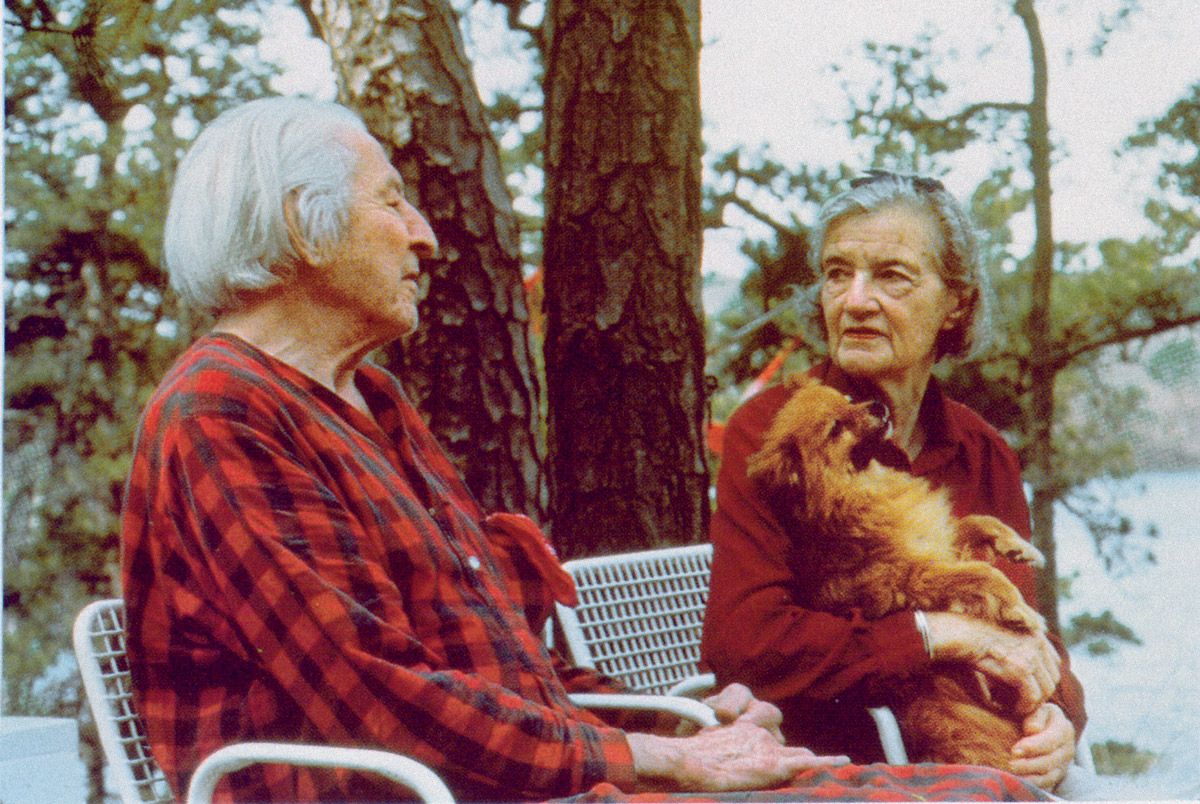
Sources:
Chermayeff, Serge and Alexander, Christopher, Community and Privacy, Doubleday & Company, 1963
Milne, Victoria, Serge Chermayeff: Never Trivial, speech given on July 25, 1994 and revised on May 9, 1996
Powers, Alan, Serge Chermayeff: Designer Architect Teacher, RIBA Publications, 2001
Credits
- Text: Carson Chan
